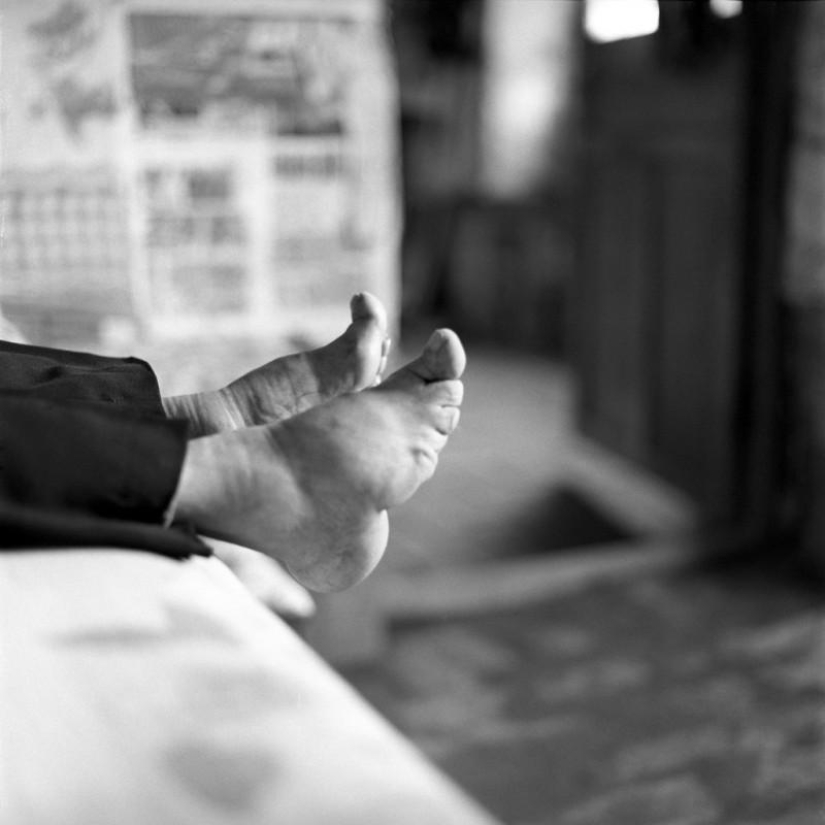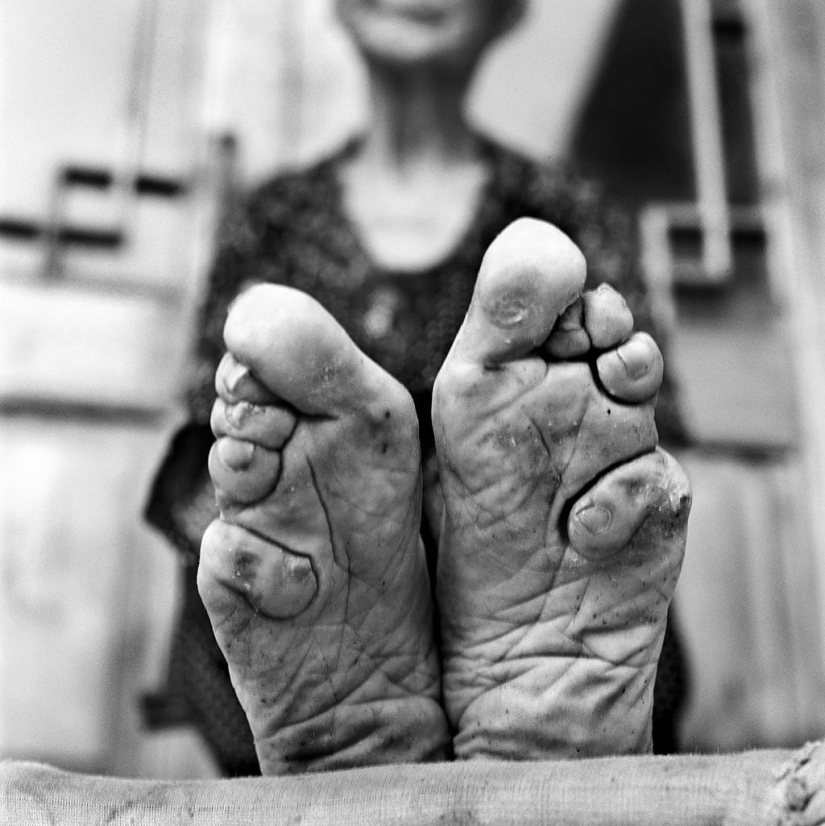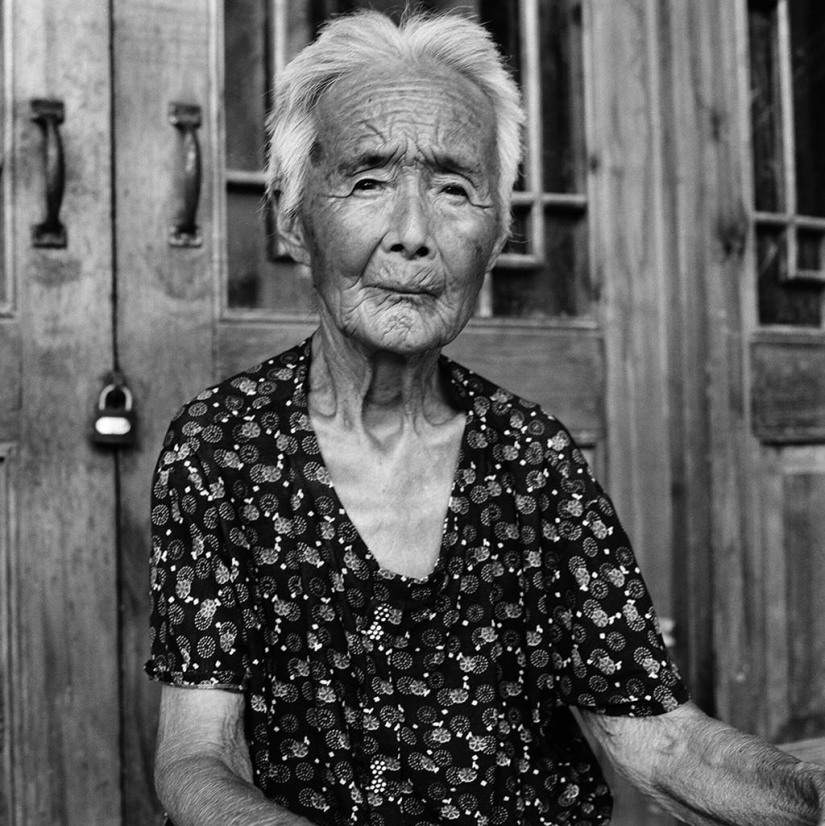The last living Chinese women with lotus feet
Photographer Jo Farrell paints vivid yet controversial portraits of older women who have gone through the horrific custom of footbinding. Fueled by her desire to photograph ancient traditions and people forgotten by the modern era, she began her photo series with a portrait of Zhang Yun Yin. This old woman was one of the few surviving Chinese women who, as a child, underwent the painful procedure of foot-binding. Since then, the photographer has returned every year to the village where the 88-year-old peasant woman lives to create a visual diary of a recently bygone story that is about to fade from our collective memory.
(Total 12 photos)


1. The tradition of foot binding has its roots in the Song Dynasty.

2. Bandaging has traditionally been performed in childhood, when the bones are much more malleable.
3. The so-called "lotus feet" are only 7 cm long, it is almost impossible to walk on them.
4. Such legs belonged to a woman who adhered to Confucian ideas of respect and duty, thereby attracting powerful husbands and prosperity to the family.
5. Footbinding was banned by the Chinese government in 1911, but the practice continued in rural communities until 1939.
6. Photographer Jo Farrell saw disturbing parallels between footbinding and modern body modifications like plastic surgery, Botox, and rib removal.
7. "Models" Farrell - 80-year-old and 90-year-old elderly women whose memory is deteriorating. Three of them died last year.
8. Joe Farrell is in a hurry to capture these women before they leave our world.
9. In her pictures, the texture and folds of aged bodies are visible, through which you can read the joys and sorrows of the past years.
10. These legs, which have already become the object of abstract scientific research, are living artifacts that carry the traces of real women with stories that are worthy of being remembered.
eleven.
12.
Keywords: China | Legs | Traditions | Photo portraits | B/w
